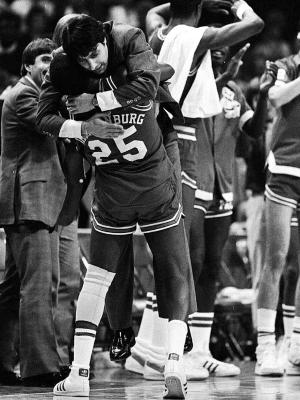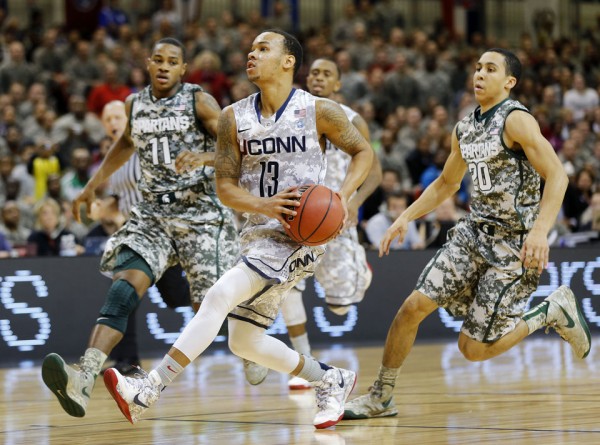Dereck Whittenburg Back At NC State: Does Player Returning as Coach Work Out?
Posted by BHayes on August 2nd, 2013North Carolina State announced earlier this week that Dereck Whittenburg, one of the heroes of the 1983 Wolfpack NCAA Championship squad, would be returning to the basketball program as an assistant coach. On paper, as it almost always does in these circumstances, the move looks great. Whittenburg’s arrival helps maintain a connection to NCSU’s past glory years, with his mere presence on the staff providing a constant reminder to players, fans, and most importantly, recruits, that the NC State program has summitted the mountain before. Pack fans must admit that this all sounds pretty good, but wait — haven’t they heard this one before? And didn’t it actually not go so well? Mark Gottfriend has done his best to erase the memories of the five-year Sidney Lowe era that preceded his hiring, but the half-decade with the former Pack star (and teammate of Whittenburg on that 1983 title team) at the helm was far too ignominious to have already slipped the consciousness of the Raleigh faithful. Now, of course, we needn’t note that Whittenburg is not running the program as Lowe did, which should figure to make this a far lower-risk hire. But with another Pack star returning to the PNC Arena sideline next season, it begs the question: Is the college star-returning-as-coach really the slam dunk hire fans believe it to be?
Lowe’s failures aside, you don’t have to scan the country long to find examples of alums returning to their old program and succeeding – both as assistants and head coaches. Most notable among current head men is Fred Hoiberg, who in 2010 took over the helm of the Iowa State program he starred at in the early 1990s. Early returns have been good for “The Mayor” in Ames, as Iowa State has won an NCAA Tournament game in each of the last two seasons. Other recent successful examples at the head coach level include Bob Huggins (West Virginia) and Sydney Johnson (Princeton).












































